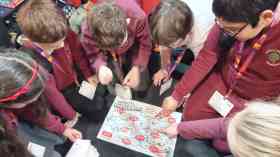In November 2020 I was told I had 6 months left to live and was at risk of sudden death, due to a colloid cyst in my brain.
Supplier Focus
Latest Supplier News
Borg & Overström is a UK manufacturer of premium drinking water solutions. For over 20 years Borg & Overström has developed sustainable, bottle-less, hygienic, drinking water dispensers with the aim to provide exceptional, safe, self-service drinking water into schools, universities, workplaces and communal spaces.

 Ed gets a lift to his new school with his mother every morning. In the car, they use the sat nav every time they take a new route. Ed tends to listen to his iPod on the way to school and sometimes plays a quick game on his mobile phone. At school, teachers use the interactive whiteboard in most lessons, and the class regularly do group work using iPads. The school has a separate timetabled computer room where they work on the PCs. In the entrance to the school, there is a plasma screen, which displays photos of the work the children have been engaged with throughout the day. The school has a website with a parent portal which enables communication between Ed’s parents and the school. When Ed gets home, he communicates with his friends on Facebook, and plays on the Xbox for a while. He completes most of his homework on his laptop.
Ed gets a lift to his new school with his mother every morning. In the car, they use the sat nav every time they take a new route. Ed tends to listen to his iPod on the way to school and sometimes plays a quick game on his mobile phone. At school, teachers use the interactive whiteboard in most lessons, and the class regularly do group work using iPads. The school has a separate timetabled computer room where they work on the PCs. In the entrance to the school, there is a plasma screen, which displays photos of the work the children have been engaged with throughout the day. The school has a website with a parent portal which enables communication between Ed’s parents and the school. When Ed gets home, he communicates with his friends on Facebook, and plays on the Xbox for a while. He completes most of his homework on his laptop.








